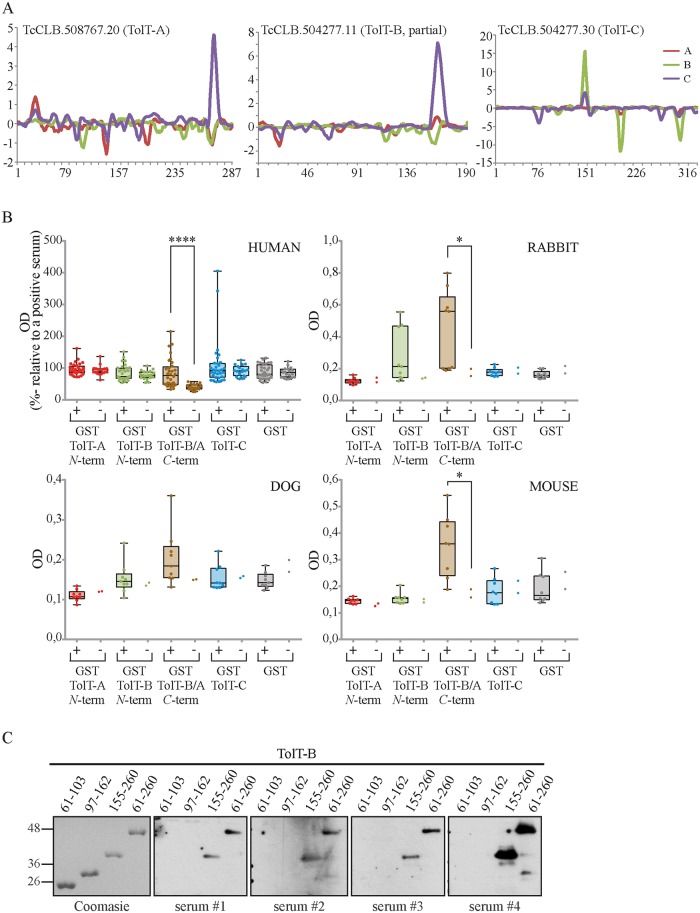Fig 7. Antibody binding to TolT peptides is focused to the conserved, mature C-terminal region of TolT-A and TolT-B products.
A) Microarrays composed of 15mer peptides overlapping by 14 residues spanning the deduced sequence of TolT members were probed, in duplicate, with three IgG samples purified from different pools of chronic Chagasic sera (denoted as A, B and C). The mean reactivity from each IgG sample toward every peptide (in arbitrary units of fluorescence) vs amino acid position (taking as residue 1 the predicted initial Meth residue, except for TcCLB.504277.11) is indicated. Solely those TolT molecules yielding positive results in at least one assay (see text and ref [37] for details) are shown. B) Dot plot analysis of ELISA results using different GST-TolT fusion proteins: TolT-A F54-T174 (GST-TolT-A N-term), TolT-B Q61-L162 (GST-TolT-B N-term), TolT-B G155-R260 (GST-TolT-B/A C-term), TolT-C A83 to D313 (GST-TolT-C) and GST. The sequences that were expressed as GST-fusion molecules and the residues spanned by each construct (numbers indicate amino acid positions relative to the initial methionine) are indicated. The ELISA plates were coated with the indicated antigen and incubated with 31 serum samples from chronic Chagas-positive individuals (+) or 19 non-infected individuals (-). T. cruzi-infected dogs (n = 9), rabbits (n = 9) and mice (n = 8) were also tested along with 2 non-infected individuals from the same species. The median and SD for each group are indicated by box and whiskers. Asterisks denote significant differences between the population medians (P < 0.0001 for humans and P < 0.05 for mice and rabbits, Mann-Whitney test). C) Aliquots (1 μg) of the indicated GST-TolT-B fusion proteins were stained by Coomasie Brilliant blue (left panel) or probed with 4 different chronic Chagasic sera by Western blotting.

